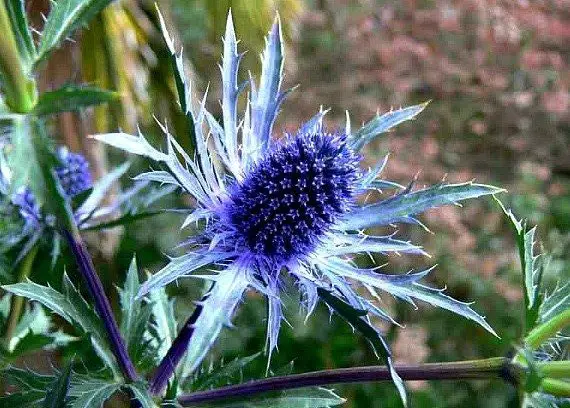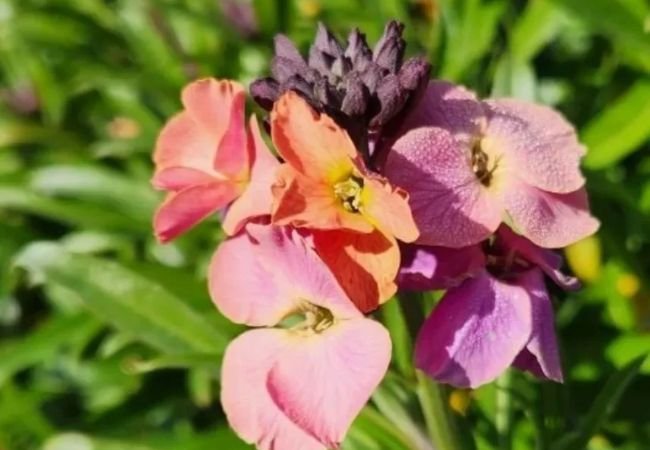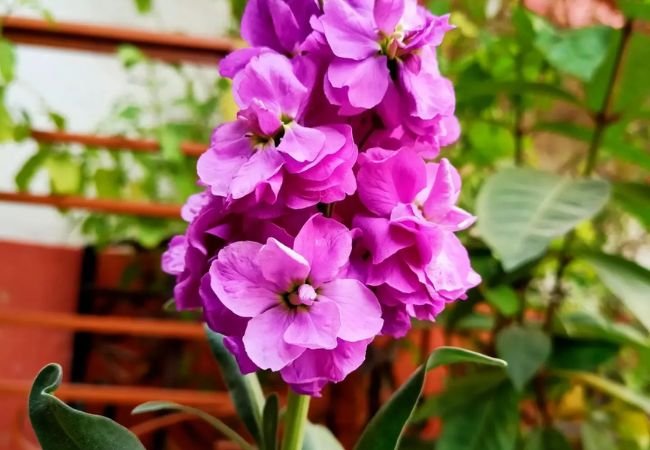Explore the unique and captivating Sea Holly flower. Learn about its varieties, care tips, and striking features. Ideal for gardeners seeking a bold, architectural plant with drought-resistant qualities.
Sea Holly, with its spiky blue flowers and silvery foliage, is a striking addition to any garden. Despite its name, it’s not related to true hollies and doesn’t require seaside conditions. In this article, we’ll delve into the world of Sea Holly, exploring its characteristics, care, and why it’s becoming increasingly popular among gardeners.
Here’s an easy-to-understand chart for Sea Holly:
| Attribute | Details |
|---|---|
| Botanical Name | Eryngium spp. |
| Common Name | Sea Holly |
| Plant Zone | 4-9 |
| Sun Exposure | Full Sun |
| Soil Type | Well-drained, sandy or loamy soil |
| Watering | Low, drought-tolerant once established |
| Growth Habit | Herbaceous perennial |
| Height/Spread | 1-4 feet tall, 1-2 feet wide |
| Special Features | Striking, spiky blue or silver flowers; attracts pollinators; deer-resistant; excellent for dried arrangements; tolerant of poor soils and coastal conditions |
What is Sea Holly?

Sea Holly, scientifically known as Eryngium, is a genus of flowering plants in the family Apiaceae. These plants are known for their thistle-like, often blue or silver flowers and spiny foliage.
Some popular varieties include:
- Eryngium planum (Flat Sea Holly)
- Eryngium maritimum (Sea Holly)
- Eryngium alpinum (Alpine Sea Holly)
The United States Department of Agriculture provides detailed information about the Eryngium genus.
Growing Sea Holly
Sea Holly is relatively easy to grow, given the right conditions:
- Sunlight: They thrive in full sun.
- Soil: Well-draining, even poor soil is preferred. They don’t like wet feet.
- Planting: Plant in spring or fall, spacing plants about 15-18 inches apart.
- Water: Once established, they’re quite drought-tolerant.
- Hardiness: Most varieties are hardy in USDA zones 4-9.
The Royal Horticultural Society offers comprehensive growing advice for Sea Holly plants.
Caring for Sea Holly
To keep your Sea Holly healthy and thriving:
- Avoid overwatering, as they’re prone to root rot in wet conditions.
- Don’t fertilize too much; rich soil can lead to floppy growth.
- Deadhead spent flowers to encourage more blooms, unless you want them to self-seed.
- In colder regions, mulch around the plants in winter for protection.
The University of Wisconsin-Madison Extension provides general information on perennial care that can be applied to Sea Holly.
Uses of Sea Holly
Sea Holly has several uses in the garden and beyond:
- Ornamental: Its unique appearance makes it a striking focal point in gardens.
- Cut Flowers: They make excellent fresh and dried cut flowers.
- Pollinator Friendly: Bees and butterflies are attracted to Sea Holly. The U.S. Forest Service provides information on pollinator-friendly gardening.
- Coastal Gardens: Their tolerance for poor soil and drought makes them ideal for coastal gardens.
Interesting Facts About Sea Holly
Did you know?
- The name “Sea Holly” comes from its resemblance to holly and its ability to thrive in coastal conditions.
- In the language of flowers, Sea Holly represents attraction and affection.
- Some species of Sea Holly are edible and have been used in traditional medicine.
- The bright blue color of many Sea Holly flowers is quite rare in the plant world.
The Smithsonian Gardens often provides interesting insights into various plants and their cultural significance.
Ecological Benefits of Sea Holly
Sea Holly offers several ecological benefits:
- Drought Resistance: Its water-efficient nature makes it valuable in dry climates.
- Support for Pollinators: It provides nectar for various insects.
- Adaptability: It can thrive in poor soils where other plants might struggle.
The National Wildlife Federation explains the benefits of using plants adapted to local conditions.
Sea Holly is a fascinating and beautiful plant that offers unique texture and color to gardens. Its striking appearance, coupled with its low maintenance needs and ecological benefits, makes it an excellent choice for many gardeners. Whether you’re looking to add architectural interest to your landscape, attract pollinators, or simply enjoy its unusual beauty, Sea Holly is worth considering.
For more information on growing Sea Holly and other unique garden plants, visit the United States Botanic Garden website.
For more gardening tips and plant care guides, visit usagardenhub.com.






